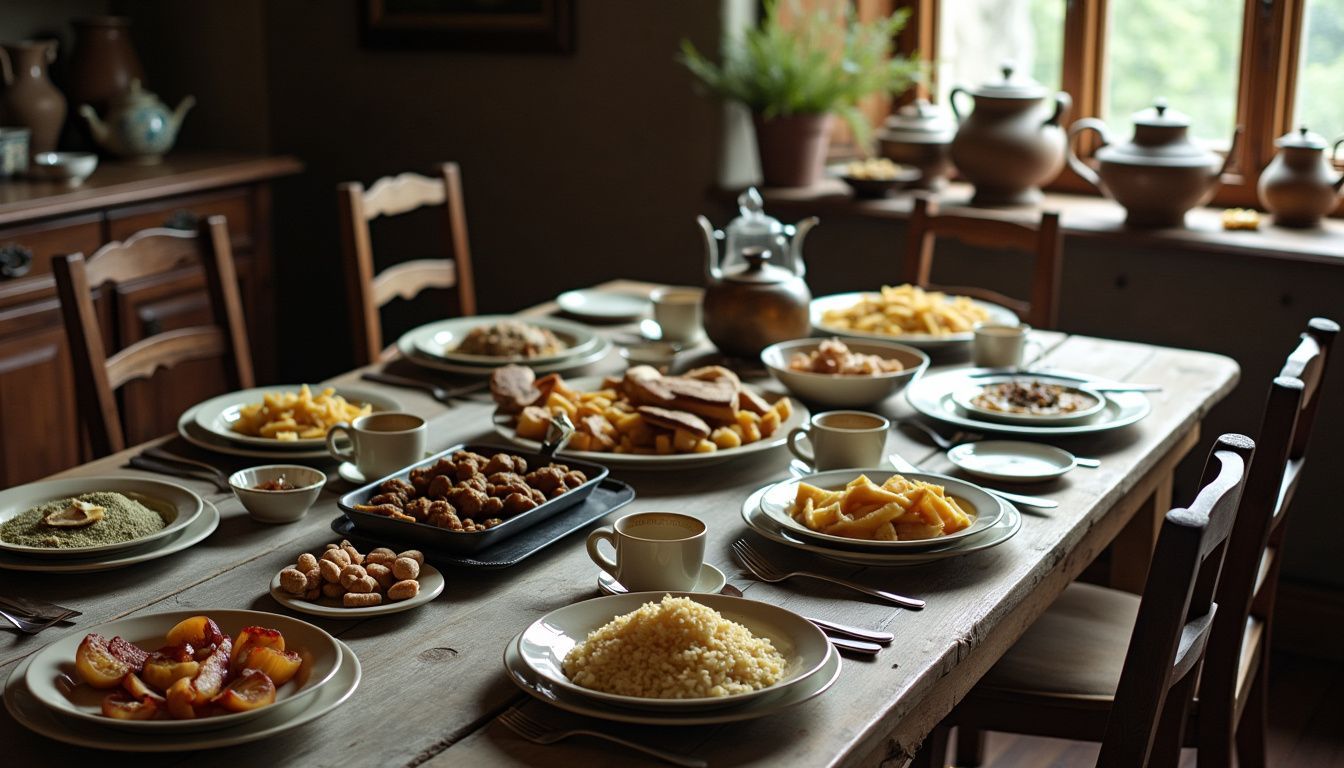Exploring forgotten foods opens a door to new flavors and vital nutrients, offering a fresh twist on eating habits. These meals not only link us to our culinary heritage but also play a key role in supporting food security.
From the resourceful dishes of the Great Depression like Hoover Stew and Johnny Cakes to the unique tastes of mock turtle soup and squirrel stew, history is filled with recipes that have fallen out of common use.
By bringing these old favorites back to life with modern tweaks, we can enrich our diets while paying homage to past culinary practices. Forgotten foods encourage us to broaden our meal choices for a healthier lifestyle and deeper connection with tradition.
Get ready to expand your palate!
The Benefits of Expanding Our Palates – Discuss the impact of consuming a variety of foods on food security and overall health
Exploring forgotten foods can open up new flavors and experience. Eating a variety of foods helps improve food security. Diverse diets supply essential nutrients. They support overall health and boost immune systems.
Trying retro cuisine offers nutritional benefits. Many vintage recipes include indigenous ingredients rich in vitamins. Expanding our palates can also keep culinary traditions alive.
This practice encourages individuals to connect with their culinary heritage. It fosters appreciation for classic meals and time-honored dishes.
Forgotten Foods from the Great Depression – Share a few examples of popular dishes from that time period that are no longer commonly eaten
The Great Depression shaped many people’s diets. Scarcity forced families to be resourceful in the kitchen. One dish that gained popularity was “Hoover Stew.” This dish combined macaroni, canned tomatoes, and vegetables.
It provided a filling meal with limited ingredients. Many enjoyed “Creamed Chipped Beef” on toast. This simple recipe made use of inexpensive dried beef. “Johnny Cakes” also became a favorite.
Made from cornmeal, these cakes offered a cheap and tasty option for breakfast. These forgotten foods remind us of resilience during tough times. Rediscovering these vintage dishes can surprise your taste buds.
Embracing these traditional delicacies enriches our culinary history.
Rediscovering Lost Recipes – Discuss how these dishes can be reintroduced into modern diets by adapting old recipes
Rediscovering old recipes provides a chance to modernize classic food choices. Forgotten recipes can find new life in today’s kitchens. Simple substitutions and fresh ingredients can make these dishes appealing to contemporary palates.
For example, incorporating seasonal produce into traditional cuisine enhances both flavor and nutrition. Using retro ingredients, like grains that fell out of favor, can create a nostalgic twist on modern meals.
Repurposing these time-honored dishes encourages culinary exploration. This approach not only fosters creativity but also enhances food security. Embracing ancient culinary practices can lead to a more sustainable diet.
Historical gastronomy offers a wealth of flavors waiting to be revived. These vintage cuisines hold the stories of our past and a taste that can surprise your taste buds.
Fun and Unique Historical Dishes – Highlight a few interesting forgotten foods that readers may not have heard of before
Many unique historical dishes still hold surprises for those willing to explore. One such dish is mock turtle soup. Originating in the 19th century, this dish used ingredients like veal and hard-boiled eggs to mimic the taste of actual turtle meat.
Another interesting dish is souse. This pickled meat dish became popular in the South. People enjoyed it as a way to preserve leftovers.
Hasty pudding also stands out. Made from cornmeal and water, it served as a staple food during colonial times. This simple dish often accompanied various meals. Some may find the idea of squirrel stew shocking.
This dish gained popularity during the Great Depression, showcasing resourcefulness in tough times.
These forgotten foods encourage us to explore nostalgic flavors. They remind us of our culinary history. Trying these recipes can bring new life to our meals. Next, we will discuss the importance of diversifying our food choices.

